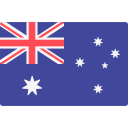Cable Interface Compatibility Manual
I. Traditional Analog Audio Interfaces (Device Side)
This type of interface is usually used to connect audio source devices (such as mobile phones, computers, players, amplifiers) to headphones or speakers.
3.5mm interface (commonly known as "headphone jack")
- Description: The most common consumer-grade audio interface, providing stereo (left and right channel) output.
- Compatibility: Most mobile phones, computers, portable players, and Bluetooth headphone receivers. Usually in a three-segment style (left, right, ground).
- Note: Some headphones with a microphone use a four-segment (left, right, ground, microphone) interface. There are two standards for four-segment interfaces: the national standard (OMTP) and the American standard (CTIA). The difference lies in the different pin orders of the microphone (Mic) and ground (GND). Incompatibility may lead to problems such as low volume, muffled sound, distortion, microphone failure, or wire control malfunction.
6.35mm interface (commonly known as "large three-core" or "¼ inch interface")
- Description: The "big brother" of the 3.5mm interface, mainly used in professional audio equipment, home Hi-Fi speakers, and guitar amplifiers. It has better physical strength and more stable contact.
- Compatibility: Professional sound cards, desktop headphone amplifiers, power amplifiers, electronic musical instruments.
- Conversion: It can be easily connected to ordinary mobile phones or computers through a 6.35mm to 3.5mm adapter.
Type-C interface
- Description: This is a digital audio interface. It transmits digital signals, and the audio digital-to-analog conversion (DAC) and amplification functions may be completed inside the headphones, in the "small tail" of the cable, or inside the mobile phone.
- Compatibility: Modern Android phones, tablets, and laptops. When purchasing, please note whether the device supports USB audio output.
- Note: The compatibility of the Type-C interface depends on the device's functions. A full-featured Type-C interface can directly connect to a Type-C headphone, enabling simultaneous charging and audio transmission. A non-full-featured Type-C interface may only support data transmission, requiring an adapter or docking station to achieve audio output. The Type-C interface of some devices does not have a built-in DAC and cannot recognize analog signal headphones. It is necessary to choose a Type-C headphone with an independent DAC or a "Type-C to 3.5mm" adapter (which needs to support digital decoding).
II. Balanced Audio Interface (Device Side)
It is mainly used in mid-to-high-end players and headphone amplifiers. It transmits signals through independent circuits, which can effectively reduce interference and improve separation and dynamic range.
4PIN XLR (Cannon connector)
- Description: The most traditional professional balanced interface, commonly found in high-end desktop headphone amplifiers.
- Compatibility: Specifically designed to drive headphones, requiring the device to have a corresponding XLR balanced output port.
4.4mm Pentaconn
- Description: The 5-pin balanced interface developed by Japan's JEITA is one of the mainstream balanced standards for portable devices.
- Compatibility: Mid-to-high-end portable players (such as Sony, Astell&Kern, FiiO, etc.) and some desktop devices.
Dual 3.5mm / Dual 2.5mm
- Description: An interface that transmits balanced signals from the left and right channels separately. Dual 3.5mm is commonly found in players from brands such as A&K (Astell&Kern). Dual 2.5mm (also known as 2.5mm TRRS balanced) was once mainstream but is gradually being replaced by 4.4mm.
- Compatibility: Portable players of specific brands. Note: The plug definitions of these interfaces may vary by brand and are not fully universal. Be sure to confirm before purchasing.
III. Headphone Replaceable Cable Interface (Headphone End)
This is the socket on the headphone, which allows users to replace and upgrade the cable by themselves.
MMCX
- Description: Interfaces that lock by rotating the buckle are very common. The plug can rotate 360 degrees.
- Compatible brands: Some models of Shure, Westone, and Sennheiser, as well as most high-fidelity earbud brands.
- Note: The tolerances (tightness) of MMCX interfaces from different brands may vary slightly. Frequent plugging and unplugging may cause loosening. When plugging or unplugging, force should be applied vertically to avoid lateral twisting. Regularly cleaning the contacts helps maintain a good connection.
2PIN (0.78mm)
- Description: It uses two pins with a diameter of 0.78mm inserted into the earphone for connection. It is one of the most mainstream detachable cable interfaces currently.
- Compatible brands: qdc, UE (Ultimate Ears), 64 Audio, and the vast majority of custom in-ear monitors (CIEM) and earbud brands.
- Note: The pins have positive and negative polarities. When plugging in, they need to be aligned (usually marked with colors or bumps). When plugging or unplugging, hold the root of the plug tightly and avoid pulling the wire directly.
Recessed 2PIN(凹槽式2PIN)
- Description: It is a variant of 2PIN. The female part of the socket is recessed into the headphone housing.
- Purpose: To prevent the plug from breaking due to accidental impact and make the appearance cleaner.
- Compatibility: A plug specifically designed for the recessed plate must be used; ordinary 2PIN plugs cannot be inserted.
Special brand-specific interface
- Sennheiser HD800/HD800S:The unique dual-hole plug, specially designed for this series of headphones, requires a dedicated adapter cable to connect to a standard interface.
- Sennheiser IE 900/IE 600/IE 300:It uses a specially made MMCX interface. The plug jacket has threads and needs to be rotated to lock, so it is not completely compatible with ordinary MMCX.
- QDC:Although it uses a 2PIN interface, the polarity of its pins (definition of positive and negative poles) is different from the mainstream standard. To avoid reverse connection of the circuit, be sure to confirm that the upgraded wire is clearly compatible with the QDC standard, or contact ivipQ for recommendations.
IV. Digital Interface
Type-C
- Description: A decoding headphone cable that connects the built-in DAC and headphone amplifier, transmitting digital signals. The sound quality is determined by the decoding headphone amplifier module.
- Compatibility: modern Android phones, tablets, laptops.
V. Compatibility Summary and Purchase Recommendations
| Interface type | Main uses | Compatibility and Precautions |
|---|---|---|
| 3.5mm | Device output terminal | It has the strongest versatility. Note the difference between the three-segment and four-segment types (OMTP/CTIA standards). |
| 6.35mm | Device output terminal | Professional and home Hi-Fi systems can be compatible with 3.5mm devices via adapters. |
| 4PIN XLR | Device output terminal | Desktop balanced headphone amplifier, requires device support. |
| 4.4mm Pentaconn | Device output terminal | The balanced output of portable players is gradually becoming the mainstream balanced standard. |
| MMCX | Device output terminal | It has strong versatility, but pay attention to the tolerances of different brands and special variants such as IE900. The plug can rotate 360 degrees, so be careful with the correct plugging and unplugging method. |
| Type-C | Device output terminal | Digital audio requires the device to support USB audio output. Note the difference between full-featured and non-full-featured Type-C interfaces. |
| Dual 3.5/2.5mm | Headphone end | Portable player balanced output, note that there may be differences in definitions between brands. |
| 2PIN (0.78mm) | Headphone end | Mainstream interface, attention should be paid to the pin polarity and plugging/unplugging methods. |
| Recessed 2PIN | Headphone end | A dedicated plug is required, and it is not compatible with ordinary 2PIN plugs. |
| HD800/HD800S | Headphone end | For brand use only, transfer required. |
| IE900/600/300 | Headphone end | The special thread MMCX is not directly compatible with the ordinary MMCX. |
VI. Purchasing and Usage Guide
When purchasing wires or adapters, please be sure to follow these steps:
- Confirm the headphone interface: Which of the above interfaces will your headphones use? (Such as MMCX, 2PIN, etc.)
- Confirm the device interface: What kind of output interface does your player, phone, or headphone amplifier provide? (Such as 3.5mm, 4.4mm, 4PIN XLR, etc.)
- Looking for a matching cable: Buy a cable with both ends matching your headphones and device respectively.
- For adapter needed: If you already have a cable but the interfaces are mismatched, you can purchase an adapter (for example: a MMCX to 4.4mm cable, plus a 4.4mm female to 4PIN XLR male adapter).
Balanced and single-ended compatibility
Balanced interface devices can usually be backward compatible with single-ended headphones (usually requiring an adapter cable), butIt is strictly prohibited to directly insert the balanced plug into the single-ended port,Otherwise, it may damage the equipment.
Plugging, Unplugging and Maintenance
When plugging and unplugging interfaces, especially MMCX and 2PIN, you should master the correct method and avoid rough operations. Regularly clean the interface contacts with cotton swabs dipped in anhydrous alcohol to maintain a good connection.
Safety Tips
When connecting or unplugging any audio cable, please ensure that the relevant equipment is turned off or the volume is set to the minimum to avoid damage to the equipment or hearing impairment caused by instantaneous current or excessive volume.








